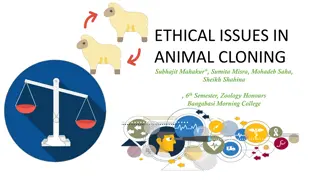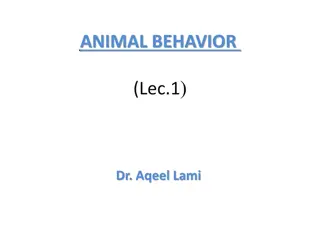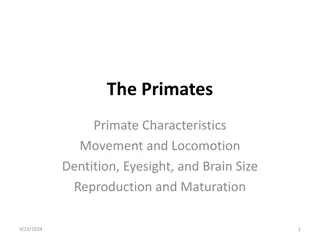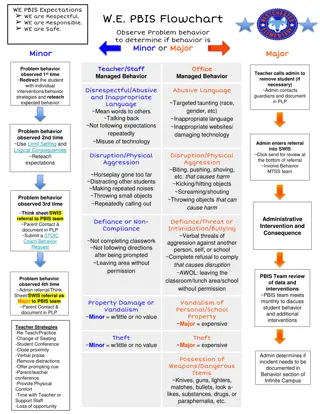Primate Behavior: Insights into Social Dynamics
Primates, including lemurs, monkeys, apes, and humans, exhibit complex social behaviors such as parental care, communication through language, and conflict resolution strategies. They invest significantly in the upbringing of their offspring, fostering skills essential for survival through play and learning. By observing primate behavior, we gain valuable insights into the intricate dynamics of social interaction within this diverse group of mammals.
Download Presentation

Please find below an Image/Link to download the presentation.
The content on the website is provided AS IS for your information and personal use only. It may not be sold, licensed, or shared on other websites without obtaining consent from the author.If you encounter any issues during the download, it is possible that the publisher has removed the file from their server.
You are allowed to download the files provided on this website for personal or commercial use, subject to the condition that they are used lawfully. All files are the property of their respective owners.
The content on the website is provided AS IS for your information and personal use only. It may not be sold, licensed, or shared on other websites without obtaining consent from the author.
E N D
Presentation Transcript
Higher Biology Unit 3 3.6- Primate Behaviour
Primates Primates are a group of placental mammals They include lemurs, monkeys apes and humans
Parental Care Primates invest a long time in parental care for a small number of offspring Primate offspring are almost helpless when they are first born During the time of parental care the parents feed their young, keep them clean, protect them from extremes of temperature, transport them and defend them from predators
Parental Care A long period of parental care allows for primates to learn complex social behaviours required for survival These behaviours include foraging, hunting and recognising danger.
Primate Language Primates learn how to communicate within their social group using their own language This language consists of sounds and gestures used to express thoughts and feelings
Primate Play During social play with other juveniles primate practise adult social behaviour They chase or flee from companions, play- fight and test their own physical limits These behaviours are exaggerated so that other members recognise it as harmless This allows them to learn skills necessary for survival as adults
Reducing Conflict When primates find themselves competing for resources they are likely to engage in ritualistic displays rather than aggressive fighting This reduces the likelihood of serious injury and increases their survival chances
Gorilla Conflict Gorillas engage in threat displays by standing on their hind legs, beating their chests, baring their teeth and growling. This type of display makes them appear larger and more threatening. Eventually one of the gorillas will concede defeat and display appeasement behaviours.
Appeasement Primates engage in appeasement behaviour to demonstrate that they accept another animal as dominant This is the opposite of a threat ritual and involves the individual making themselves look as small and unthreatening as possible
Grooming Some primates such as chimpanzees use grooming as a way to reduce tension within the group. This is a form of reciprocal altruism as the chimps pick fleas and mites from each other s bodies. It is also used as a reconciliation method after a fight.
Appeasement Primates can use facial expressions and body language as forms of appeasement A primate closing its eyes during a struggle with another is indicating that it accepts it has been dominated and will give up the struggle Lower chimpanzee males greet a dominant male by making a series of quick bows and lowering themselves enough to be able to look up respectfully Female chimpanzees will present themselves sexually to a dominant male to appease him
Social Structure Within a primate society a social hierarchy exists Each individual has their place within the group which they accept Individuals tend to avoid challenging members of the group that are a higher rank This social hierarchy is very complex and liable to change
Social Structure The ecological niches occupied by primates can vary greatly Underlying the success of their survival in these different niches is the fact that they belong to social groups Group sizes between species of primates vary greatly and can change depending upon predator pressures and availability of resources By living in social groups and hunting and feeding cooperatively primates increase their chances of survival
Resources Each group of primates has a home range This is an area in which it spends much of its time looking for food or somewhere to sleep The size of the range is dependent upon the distribution of the animal s preferred food Leaf eating primates can survive in a smaller home range than fruit eaters
Taxonomy Primates of the same taxonomic group tend to occupy similar niches and employ a similar social structure The more distantly related primates are the more different their niches are likely to be
For no other reason than its a baby gorilla
























